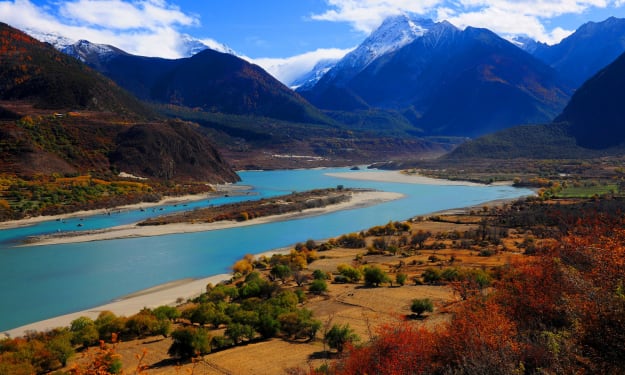Civilization unveiled
From nomadic beginning to global tapestry

Within the vast expanse of our historical tapestry lies an epic saga of transformation and ingenuity, marking the birth of civilization. Envision the fertile crescents of ancient lands, where the first seeds of agriculture were sown, forever altering the human saga. This journey unfolds from the dawn of humanity, where our ancestors roamed as nomads under open skies, to the awe-inspiring emergence of the first great empires.
These empires, with their grandeur and complexity, transcended mere political phenomena; they were crucibles of cultural and technological advancements, molding the very essence of human identity and community. This is a tale of how scattered tribes, bound by the necessity of survival, transcended their nomadic existence to lay down the roots of organized communities.
Prepare to embark on a captivating voyage to witness our exceptional journey, joining us for the rise of civilizations. In the early stages, humans were primarily nomadic, constantly moving in search of food, crucial for survival. These small, mobile groups, often extended family units, maintained a close-knit social structure. Their subsistence depended on hunting animals and gathering wild plants, fruits, nuts, and seeds, adapting to varied diets based on region and season.
Using stone tools for hunting and butchering, these tools evolved over time, becoming more sophisticated. Social structures were likely egalitarian, with no rigid hierarchies, relying on cooperation and resource sharing for survival. Artistic expression, evident in cave paintings and small sculptural objects, hinted at rich cultural lives and early religious beliefs.
Shelters were temporary, often simple constructions, and clothing made from animal skins was essential, especially in colder climates. Early humans showcased adaptability, occupying diverse environments from African savannas to Arctic conditions. The control of fire became a significant milestone, providing warmth, protection, and a means to cook food, enhancing digestibility and safety.
During the Paleolithic era, humans faced ice ages, adapting to changing climates and landscapes. Around 12,000 years ago, as the last ice age receded, stable and warmer climates ushered in an abundance of plant and animal life, notably in the Fertile Crescent. Growing populations led hunter-gatherer groups to experiment with the cultivation of wild grains, marking the beginning of the Neolithic Revolution.
This shift to deliberate farming fundamentally changed human interaction with the environment, offering a reliable food supply and enabling permanent settlements. With the domestication of animals like goats and sheep, communities became more self-sufficient, fostering the development of complex social structures. The Fertile Crescent, often regarded as the cradle of civilization, witnessed early developments in agriculture and permanent settlements.
Advancements in farming techniques allowed communities to produce surplus food, paving the way for specialization in professions such as pottery, weaving, and toolmaking. This surplus also facilitated the emergence of trade networks and the exchange of goods and services. With increased economic and social complexity, the need for organization and governance arose, giving rise to social hierarchies and leaders managing resources, laws, and public works.
As settlements grew, organized urban planning became necessary, leading to the development of infrastructure like roads, markets, temples, and storage facilities. Metallurgy, the manipulation of metals, marked a groundbreaking development, with copper being initially used in its natural metallic state during the Copper Age around 5,000 BC. Subsequent ages, such as the Bronze Age and Iron Age, brought about the evolution of metalworking and its applications in agriculture and military technology.
The invention of writing systems, such as cuneiform in Mesopotamia and hieroglyphics in Egypt, around 3,500 BC, played a pivotal role in the documentation and preservation of information beyond oral traditions. Mesopotamian cuneiform evolved into a complex writing system used for legal codes, trade records, and literary works, influencing the administration and cultural development of ancient societies.
Similarly, Egyptian hieroglyphics contributed significantly to the governance, religious life, and intellectual progress of their civilization. The invention of the wheel around 3,500 BC revolutionized transportation and trade, facilitating the movement of goods and people over greater distances with less effort.
The development of the plow, particularly when coupled with animal power, transformed agriculture, leading to more efficient tilling of land and increased crop yields. As human societies evolved and became more complex, conflicts also transformed, reflecting the burgeoning complexities of organized communities.
In ancient Mesopotamia, city-states engaged in warfare primarily over vital resources like fertile land and water, essential for their agrarian-based economies. Defensive measures, such as walls around cities like Jericho, indicate early concerns for territorial security. The Akkadian Empire, founded by Sargon of Akkad around 2300 BC, marked the first instance of empire-building in recorded history.
Sargon's conquests unified a vast region under a centralized authority, setting a precedent for future empires in terms of scale and governance. The Akkadian Empire introduced new levels of social and administrative complexity, including the use of a standardized language for administration and the implementation of a more sophisticated bureaucracy.
As civilizations rose and fell, leaving lasting legacies through structures like the Colosseum, the Hanging Gardens, and the Great Wall, the essence of civilization lies not just in grandiose achievements but in the daily lives of ordinary people. Farmers, weavers, and storytellers form the backbone of communities, shaping the foundations of civilization.
As we look forward, facing a world interconnected by technology, we carry the lessons of history with us. Recognizing the importance of learning from past mistakes, celebrating diverse cultures, and using technology to improve lives, our future should focus on knowledge, empathy, and sustainable innovation.
In this ongoing story of civilization, we are not just inheritors but active participants tasked with creating a future that honors our past while embracing unity and progress. We have the opportunity to write a new chapter, one that emphasizes harmony and collective well-being, continuing the journey that began millennia ago.
About the Creator
Abdulmalik Habib
Born '96, I started writing in 2020, exploring personal growth. Bridging analog and digital, my work delves into life's nuances. Join my journey in the internet era, where each word aims to inspire, provoke thought, and foster connection.
Reader insights
Good effort
You have potential. Keep practicing and don’t give up!
Top insight
Eye opening
Niche topic & fresh perspectives






Comments
There are no comments for this story
Be the first to respond and start the conversation.